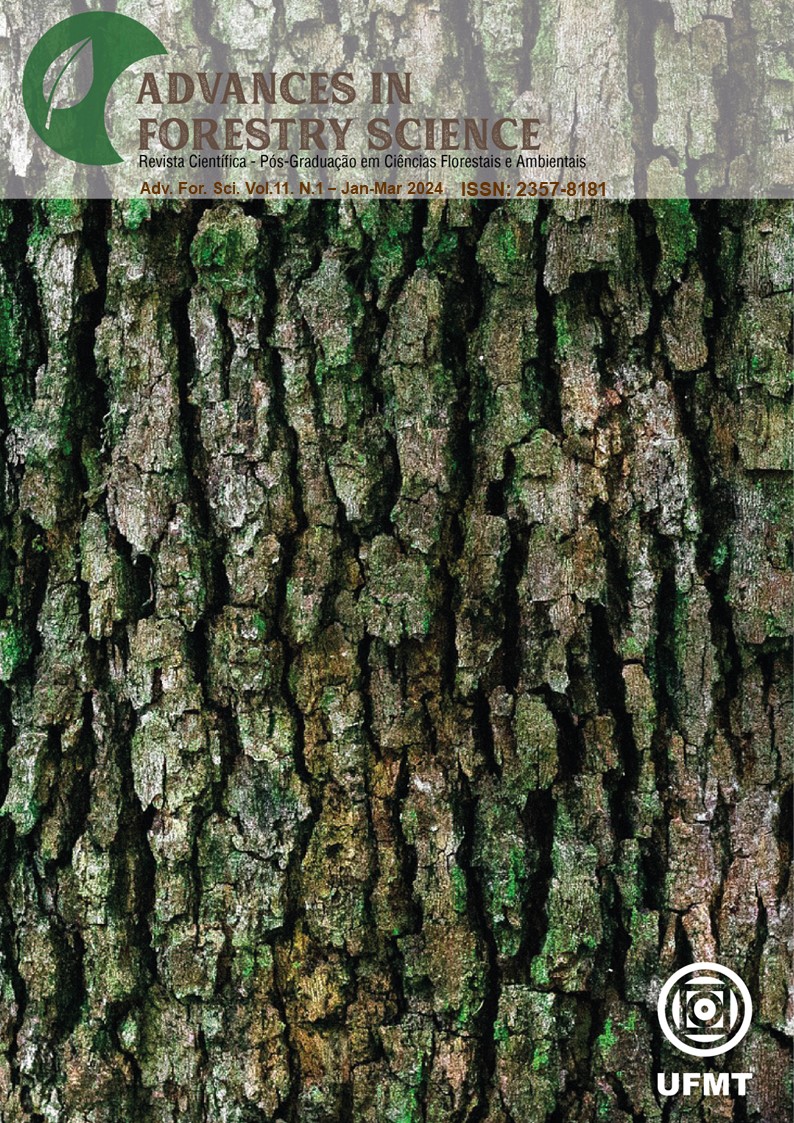Apparent density of wood determined by two different methods in Pinus caribaea var. hondurensis and Pinus tecunumanii
DOI:
10.34062/afs.v11i1.16630Abstract
The aim of this study was to compare the apparent wood density obtained by two different methods in populations of Pinus caribaea var. hondurensis and Pinus tecunumanii, both 50 years old, located in Itirapina, SP. For this purpose, five trees of each species were selected. From each tree, two discs of 7 cm thickness were removed in the diameter at breast height (DBH) region. To determine the apparent density by the gravimetric method, samples were collected at five different positions, from pith to bark, on one of the discs. The other disc was used to obtain the radial profile of apparent wood density, using the X-ray Densitometry method. The results revealed that the apparent density did not differ significantly between the species. Variations in apparent density were observed from pith to bark in the trunks of both species, with a tendency of increasing density towards the bark. Furthermore, positive correlations between radial position and apparent density were observed in both species. The methodologies used to obtain the apparent density showed a high correlation between them, allowing for estimates with good precision. It is worth noting that the apparent density obtained by the gravimetric method showed significantly higher values than the X-ray densitometry method.
Downloads
Published
Issue
Section
License
All copyright must be assigned to the Federal University of Mato Grosso.

